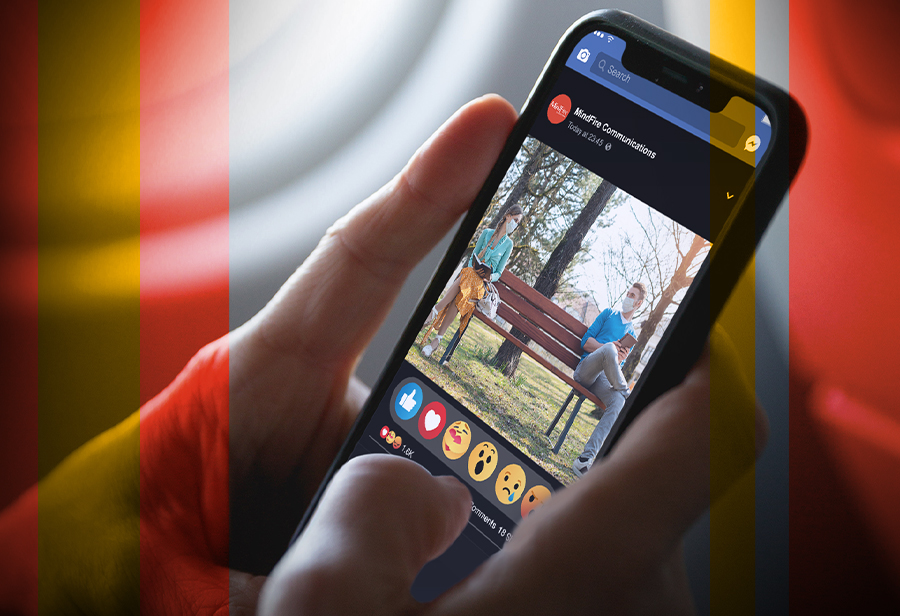
Thinking
Your guide to social media during a crisis
There is no rulebook for when a global pandemic strikes. No lines in the sand making it clear what is right and what is wrong. When the novel coronavirus hit United States soil, we witnessed a flood of panic and confusion with no clear direction of where to go next.
State-wide shelter-in-place ordinances and social distancing recommendations from the Centers for Disease Control and Prevention kept people in their homes and glued to their TV sets. Simultaneously, the unpredictable experience of this pandemic left people yearning for a sense of community. While being advised to stay in, many people turned to one place to fill that need: social media.
Billions of people are spending on average up to 20 percent more time on social media than before, according to Statista. Endless scrolling left plenty of opportunities for brands to be seen…but not without risk. While marketers recognized the opportunity, most also instinctively understood the unique circumstances presented and equally big opportunity for mistakes. No one wants to be that brand with a tone-deaf social media campaign.
When it comes to situations like COVID-19, how does your team react? We have a few recommendations to keep your team and your brand moving.

Things your social media team SHOULD do
Hit pause.
The moment words like “outbreak” and “panic” become common phrases in the news, it’s time to hit pause on sharing social content. Re-evaluate any pre-written content and determine if it’s appropriate to move forward as planned. Any messaging aimed towards selling can easily be deemed insensitive in heightened situations like the one we’re finding ourselves in.
Get ready.
Ordinances, guidelines and social recommendations can change at the drop of a hat. Has your team explored ALL the possible outcomes of the current situation? Can things get worse? How long can the situation last? What are the wild card situations? What if this is the new normal?
There is incredible value in being proactive rather than reactive to the news. Anticipating future scenarios and creating content for all situations provides you with easily accessible content and will prepare your team in addressing any consumer questions.
Put your community first.
No matter who your clientele is, it’s likely you’re going to need to tweak your messaging. Everyone is feeling the impact of COVID-19 – whether it’s through a lost job, kids who are home from school or insane working hours at an essential business. Recognize these challenges with your community online and remember that many people are fragile during this time.
Take notes from some of our favorite creative campaigns during the COVID-19 outbreak. For example, our client APQS, a longarm quilting company, flashed their bat signal for their audience to create masks for those in need. Facebook gathered heartwarming content to remind us that we’re all in it together, and Miller Lite upped the ante with a $1 million kickoff for a fundraiser to support bartenders in the U.S.
Get creative.
Find a new way to get your message out there that isn’t insensitive during this challenging time. Direct-to-consumer companies like our client Wahl Animal in Sterling, Illinois shifted from sales straight to education and used that time to uplift its brand ambassadors and partners. Our friends at Mississippi River Distilling Company in LeClaire, Iowa completely changed production from whiskey to hand sanitizer in just a few days.
If changes like this aren’t possible for your company, get authentically human. Share your team’s favorite recipes and work-from-home tips, utilize interactive content like one of Canva’s story templates, or even try uplifting local artists through Instagram or Facebook Live. Remember your audience is on social media as a distraction.
Review. Review. Review.
Weekly, if not daily, your team should review the potential posts you have planned for the week. Analyze every sentence, just in case. It’s better to be safe than sorry. This isn’t just for the sake of brand appearance. Facebook cracked down on boosting and ad capabilities during COVID-19. This means that any posts related to COVID-19 are under a higher scrutiny than others and have a higher chance of being rejected. The slightest alteration in sentence structure could make all the difference in whether your post gets viewed by dozens or thousands.
Things your social media team SHOULDN’T do
Share the (scary) news.
On average, time watching or reading the news increased by nearly 40 percent worldwide, according to Statista. People scrolling through social media are looking for a distraction during this time, not a reminder. With scrolling time up by 20 percent, there are plenty of opportunities for social media users to see your company’s content.
Push product.
Internet trolls run rampant when something is afoot. Don’t give them the opportunity to smear your brand by trying to push sales. If you decide to promote a specific product, make sure the language you’re using doesn’t make the user feel like they “have to have it.” Instead, align your messaging to reflect how helpful your product is. Now is not the time for tone-deaf status updates.
Focus on what you’re missing.
Everyone is missing “real life.” Constant reminders of what people used to be able to do will only distract them from your brand and the goods you’re offering. Be conscious of the world around you.
Overall, social media is an ever-changing ball game, especially in times of crisis. If utilized and fueled properly, these channels can bring on a whole new aspect to your company. Be sure to follow the changing trends and be ready to pivot.
Interested in talking more about social strategy? Drop us a line.

